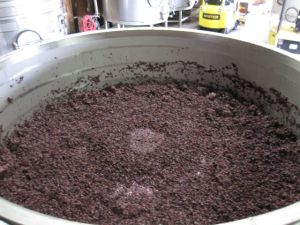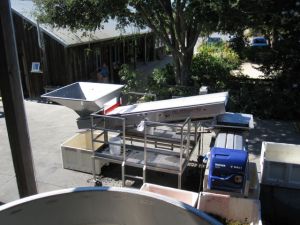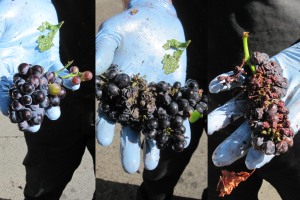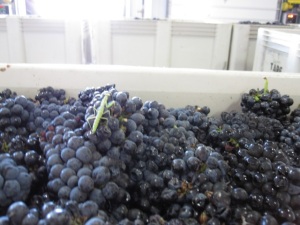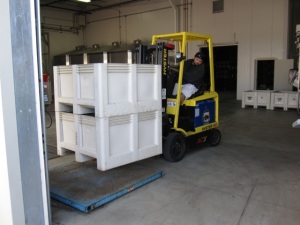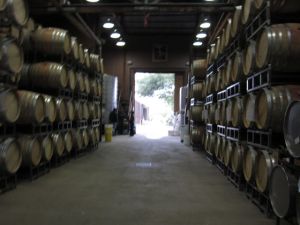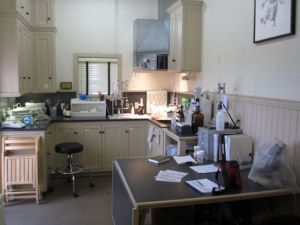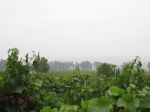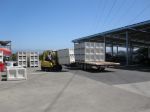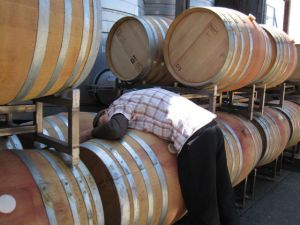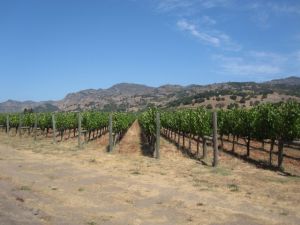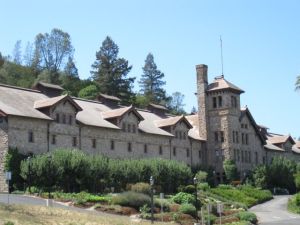It is a common practice in California, due to the “perfect climate”, to allow grapes to ripen to “phenolic maturity”. Phenolic compounds are contained in the skins and seeds of grapes, and by allowing them to ripen to maturity means that they will not impart bitter woody tastes (like over-steeped tea, from the seeds) and will have more developed fruit aromas/flavors (from the skins). However, this often means that grapes are picked when they are at 26° brix, or sometimes higher. As brix is a measure of sugar, and sugar is converted to alcohol, wine made from these grapes would be high in alcohol: around 15% and higher. This is considered acceptable for some varieties, to some people. There is, of course, a way to lower the alcohol by adding water to the must to dilute the sugars. And depending on the philosophy of the winemaker, this is not only acceptable, but the right approach to making “balanced” wine in California.
Of course, when fruit ripens, becoming sweeter and sweeter, it lose acidity. And acidity is what makes wine good to drink with food, it makes it refreshing and cleanses the palate (think lemonade!) So to make balanced wine with grapes that are “phenolically” ripe, winemakers must add tartaric acid (a grape’s natural acid, though in this case from it has been extracted from grape sources, only to be added back to grapes) in addition to water. This may seem like a roundabout way of taking care of the problem... why not just harvest the grapes when the acid and sugars are in balance? I ask that question as well, and the answer I come up with is that wines with ripe fruit character sell. Also Americans are just not phased about having additives, from natural sources or not, in our food or drink. No one is really outraged about a little chemistry... after all some of us (read: I) drink Red Bull from time to time.
Now, to say that this (it has a name: water-backing) is common, is not to say that everybody does it. Just like not every wine is adulterated with Mega Purple. But just as Mega Purple is added to give uniform color to a wine to make a consistent product, water-backing provides the winemaker with a degree of control over the wine (specifically the alcohol content and acid) to create a uniform product that will be acceptable to the (American) market. Simple as that; its not romantic, its business.
There are winemakers out there who disagree, and question the acceptability of the practice. I’ve seen back labels that stated the ingredients in the wine, which read “organic grapes”. Of course I thought that it was BS. Besides being hard to imagine anyone making a reliable living depending on spontaneous fermentation, not adding yeast nutrients or enzymes, there is the question of what else could constitute an ingredient in wine making. After all, oak barrels play a significant role in the aroma, flavor and feel of a wine; should they to be included on the ingredient list - after all tannins from the oak leech into the wine. Another issue is vintage variation. With so much chemistry, and such ease of ripening, its easy to make a very consistent product from year to year. Great for creating a product, but frankly boring; if nothing ever changes, why put a date on the bottle? Lastly, if the grapes ripen so easily, to such high levels of sugar, it raises the question of how appropriate the variety is suited for the place. In physiological terms, grapes ripen faster in warm weather, but developing complex flavors takes a long slow ripening period. When you ripen too fast, you get too much sugar, not enough flavor. Though some would say that its just a different expression. Or, climate change can be tasted in the glass. And while water-backing is illegal in France under AOC rules, producers there have the right to add beet sugar to the must to increase alcohol. Is this any better or worse?
The point of all of this is not to question the decisions of winemakers and winery owners. Rather, it is to give context to this anecdote:
I found myself adding approximately 60 gallons of water to a tank of must to bring the brix down to 24°. To do this we use a large gauge that connects to the end of a hose via a quick release connector. The gauge is large, and heavy, and awkward to hold. And it takes about one minute for 10 gallons to flow, so I was looking at standing there, holding the gauge for six minutes. After about 30 seconds of holding the hose, I attempted to adjust it and find a more comfortable position. This is when the quick release connector came to rest on the edge of the fermentation tank, and did just that; it quickly release the water gauge. Right into the tank. And disappeared into a mess of grapes.
I stood there dumbstruck. There was really nothing I could do to retrieve it. I couldn’t get into the tank, or just reach in... it was 15 feet down a dark tank, under 6 feet of juice and 3 feet of grape skins. And there was no way to ignore it. Eventually I would have to tell somebody, because I would not be able to complete my tasks - it would look awfully weird if I went around carrying buckets of water instead of using the hose.
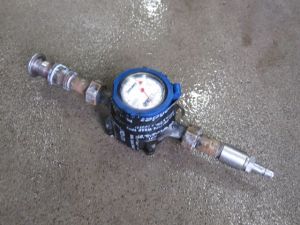
So I went to tell the cellar master, figuring, at least he would be able to find another water gauge. He left into action (literally... he is a bit hyper) while I stood there, still coming to terms with the idiotic thing I had just done. While I began to prepare to transfer all of the juice from one tank to another, then dig out the gauge from the remaining grape skins, the cellar master had already rigged up a crazy rake taped to a telescopic pole, and was ready to go fishing.
After just a few attempts, we managed to get the offending piece of metal out, much to the relief of the winemaker. And then he told me about the time he accidentally dropped a bin (yeah, a bin that holds a half ton of grapes) into one of the fermentors. That made me feel a little better.
On a related topic, some interesting articles on Natural Winemaking:
http://www.nytimes.com/2005/02/02/dining/02pour.html?_r=1http://www.alicefeiring.com/feiringsquad/wine/natural_wines_t.htmlhttp://www.vinography.com/archives/2009/09/natural_wine_the_panel_transcr.html
